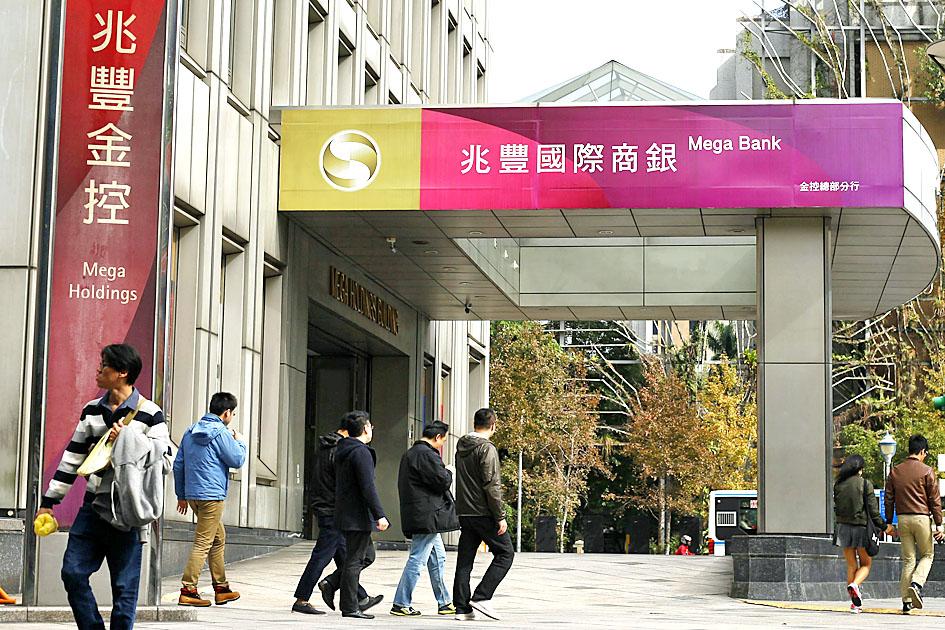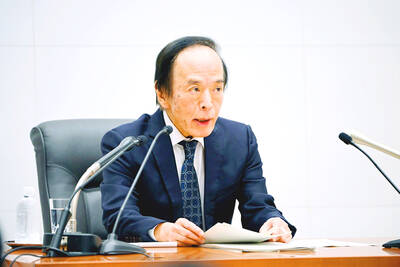State-run Mega International Commercial Bank (兆豐銀行), the main subsidiary of Mega Financial Holding Co (兆豐金控), yesterday said it aims to strengthen mortgage operations this year, as the business helps boost credit card customers and fund sales.
The lender’s mortgage operations last year spiked 64 percent year-on-year to NT$120 billion (US$4.24 billion), carrying its retail banking to second place among domestic peers, despite sharp competition, Mega Bank said.
Mega Bank attributed the achievement to its successful targeting of customers with real demand, namely first-time home buyers and those with relocation needs.

Photo: Ritchie B. Tongo, EPA-EFE
Mortgage borrowers tend to have long-term relationships with banks and have demonstrated a keen interest in credit card usage, mutual funds, foreign currencies and other financial products and services, Mega Bank said.
Mortgage customers accounted for NT$6.1 billion of fund sales last year, the highest in three years, while contributing NT$2.3 billion in credit card spending, the lender said, adding that 70 percent of mortgage customers own Mega Bank credit cards.
The central bank’s selective credit controls are favorable for the health of the mortgage market, as they require higher capital for property development and multiple home purchases, the lender said.
Mega Bank said it would beef up mortgage operations by increasing its number of clients aged 39 or younger, adding that first-time home buyers underpin this group with an average loan demand of NT$8 million.
The lender would support the government’s program to provide young home buyers with preferential interest rates and make its online services more user-friendly, it said.

Taiwan Semiconductor Manufacturing Co (TSMC, 台積電) last week recorded an increase in the number of shareholders to the highest in almost eight months, despite its share price falling 3.38 percent from the previous week, Taiwan Stock Exchange data released on Saturday showed. As of Friday, TSMC had 1.88 million shareholders, the most since the week of April 25 and an increase of 31,870 from the previous week, the data showed. The number of shareholders jumped despite a drop of NT$50 (US$1.59), or 3.38 percent, in TSMC’s share price from a week earlier to NT$1,430, as investors took profits from their earlier gains

In a high-security Shenzhen laboratory, Chinese scientists have built what Washington has spent years trying to prevent: a prototype of a machine capable of producing the cutting-edge semiconductor chips that power artificial intelligence (AI), smartphones and weapons central to Western military dominance, Reuters has learned. Completed early this year and undergoing testing, the prototype fills nearly an entire factory floor. It was built by a team of former engineers from Dutch semiconductor giant ASML who reverse-engineered the company’s extreme ultraviolet lithography (EUV) machines, according to two people with knowledge of the project. EUV machines sit at the heart of a technological Cold

TAIWAN VALUE CHAIN: Foxtron is to fully own Luxgen following the transaction and it plans to launch a new electric model, the Foxtron Bria, in Taiwan next year Yulon Motor Co (裕隆汽車) yesterday said that its board of directors approved the disposal of its electric vehicle (EV) unit, Luxgen Motor Co (納智捷汽車), to Foxtron Vehicle Technologies Co (鴻華先進) for NT$787.6 million (US$24.98 million). Foxtron, a half-half joint venture between Yulon affiliate Hua-Chuang Automobile Information Technical Center Co (華創車電) and Hon Hai Precision Industry Co (鴻海精密), expects to wrap up the deal in the first quarter of next year. Foxtron would fully own Luxgen following the transaction, including five car distributing companies, outlets and all employees. The deal is subject to the approval of the Fair Trade Commission, Foxtron said. “Foxtron will be

INFLATION CONSIDERATION: The BOJ governor said that it would ‘keep making appropriate decisions’ and would adjust depending on the economy and prices The Bank of Japan (BOJ) yesterday raised its benchmark interest rate to the highest in 30 years and said more increases are in the pipeline if conditions allow, in a sign of growing conviction that it can attain the stable inflation target it has pursued for more than a decade. Bank of Japan Governor Kazuo Ueda’s policy board increased the rate by 0.2 percentage points to 0.75 percent, in a unanimous decision, the bank said in a statement. The central bank cited the rising likelihood of its economic outlook being realized. The rate change was expected by all 50 economists surveyed by Bloomberg. The